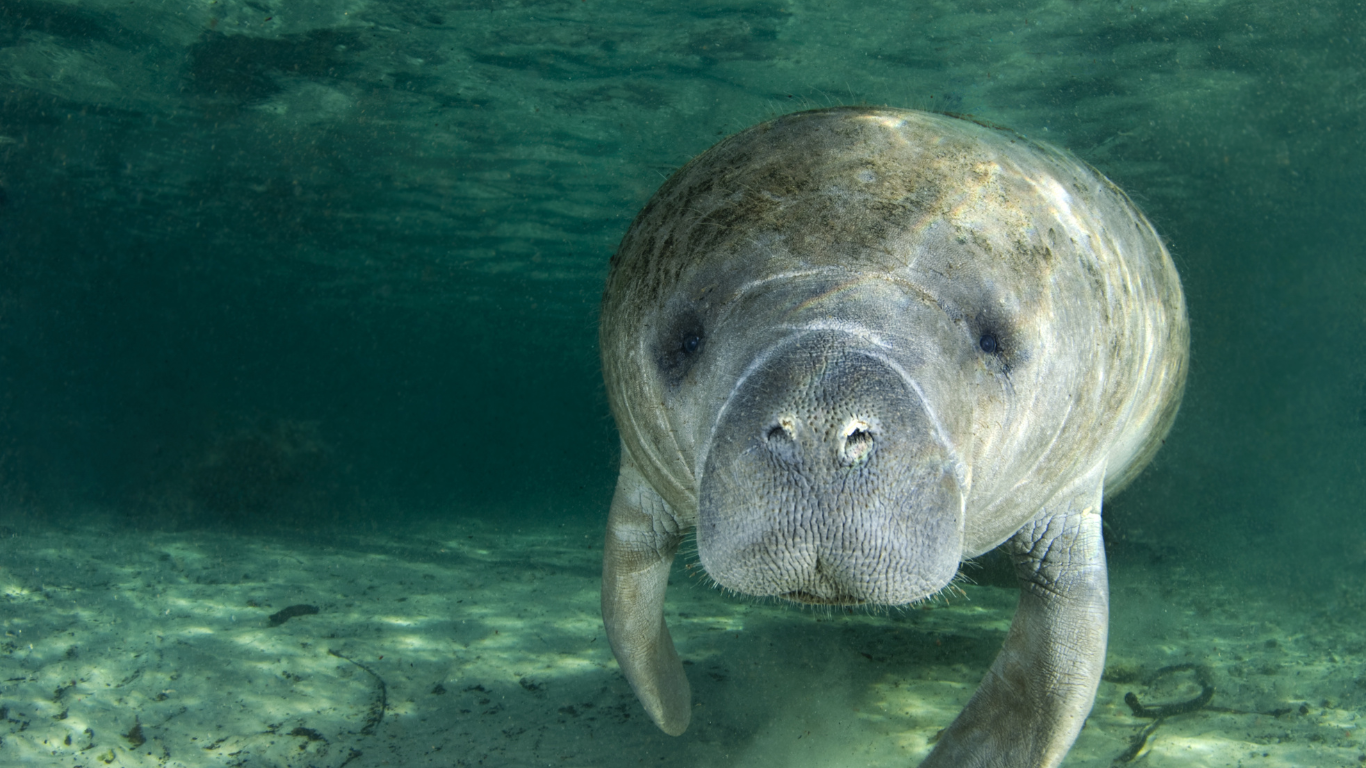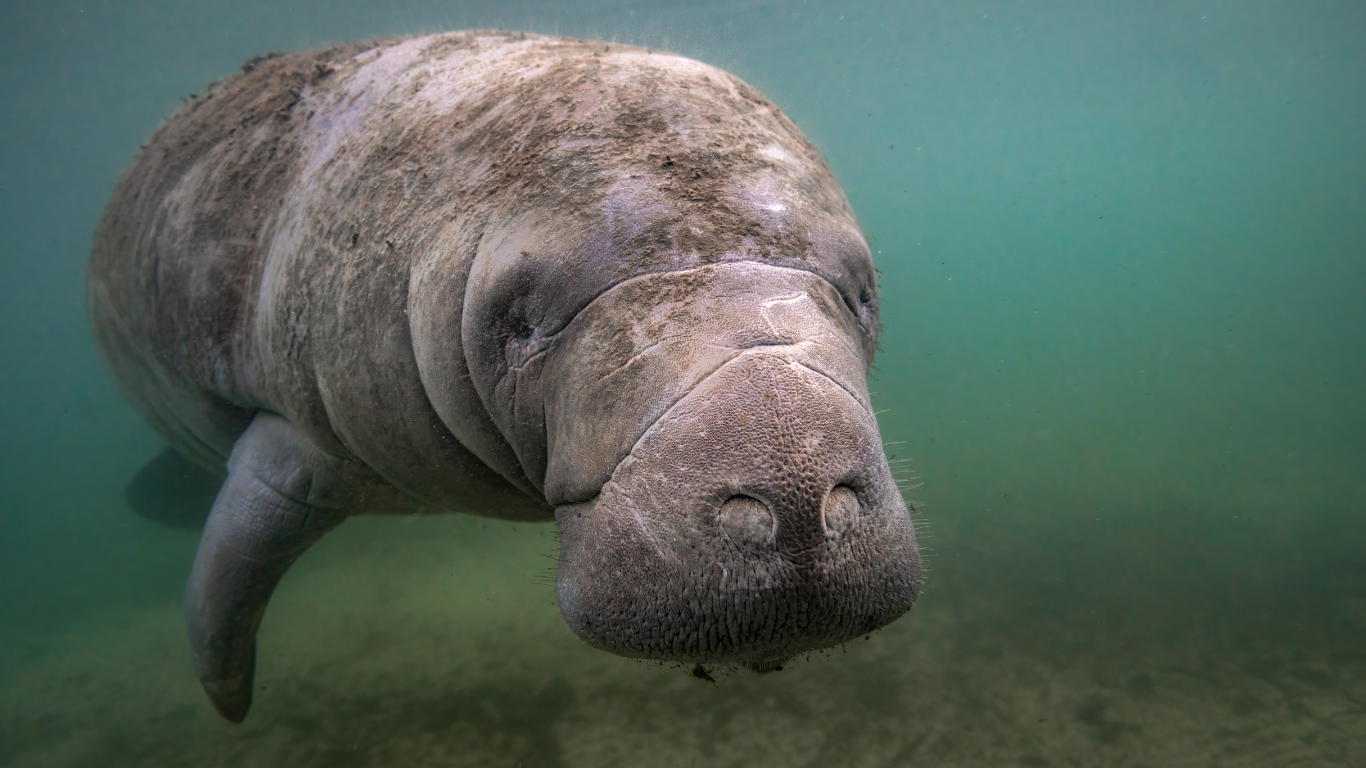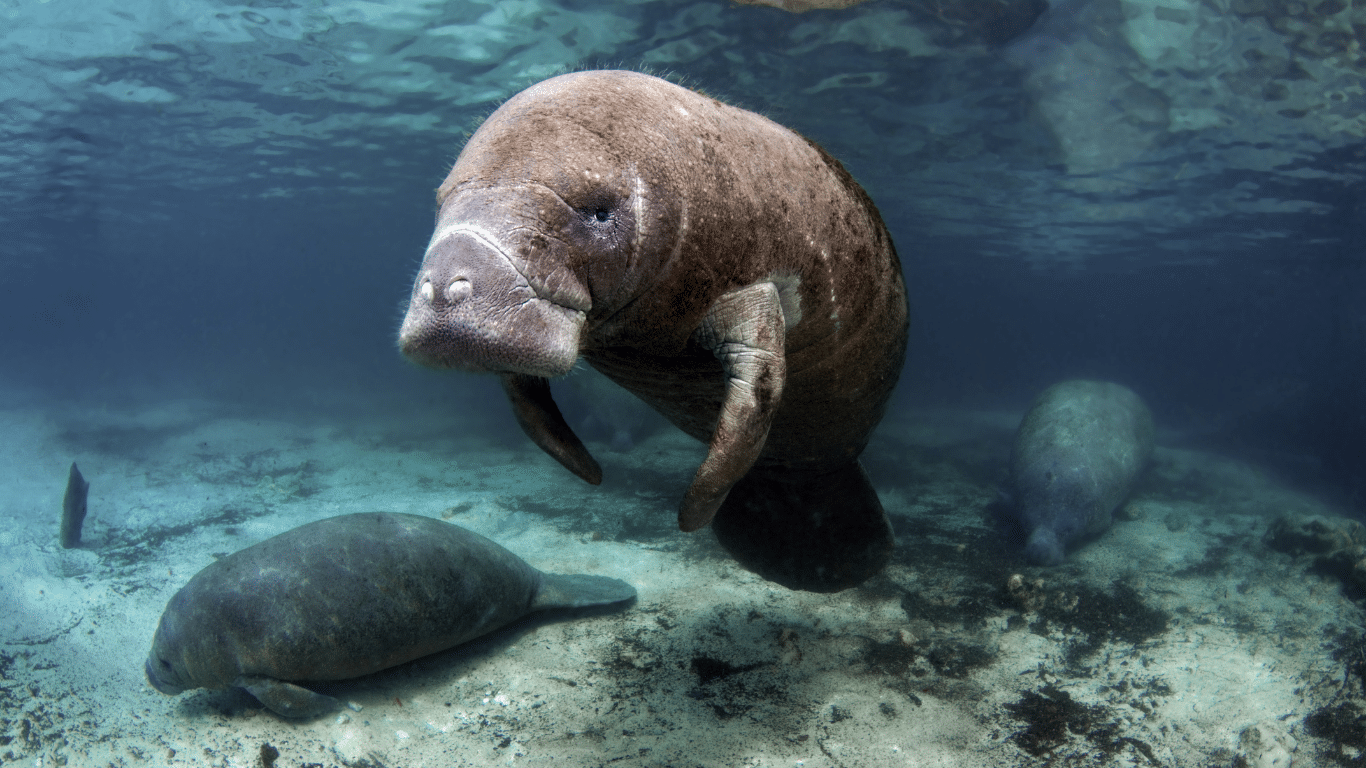Manatees
Large, gentle and almost cartoon-like, manatees are quite a sight to behold. Often referred to as sea cows, these fully aquatic marine mammals are in fact most closely related to elephants. That’s not difficult to believe, considering that adults average around 9’10” (3 meters) in length and usually weigh between 880lb and 1,200lb (400-550kg)!
Found in the Caribbean, the Gulf of Mexico, the Amazon and West Africa, manatees love to bask in shallow, marshy coastal areas, mangroves and river systems.
But manatees, like so many other species, are in trouble. Read on to learn more about this magnificent species, the threats to its survival, and what you can do to help.
Quick facts
Manatees consume over 60 different species of seagrasses and aquatic plants, keeping vast meadows of marine vegetation in check. This is why they’re considered the ‘gardeners’ of the ocean.
They use their divided upper lip to tear off plants and eat about 10 to 15% of their body weight in vegetation daily – an average of 110 pounds (50kg) every day!
Like their land relatives, elephants, manatees have teeth that are continually replaced to combat the degradation they experience from eating high-fibre food.
Manatees move slowly, averaging speeds of just three to five miles per hour (five to eight kilometers per hour). However, they are capable of reaching speeds up to 20mph (30km/h) in short bursts.
Manatees give birth around every two years, with gestation lasting about a year. Calves are dependent on their mothers for up to 18 months.
Although manatees can move between fresh and saltwater, they generally fare better in freshwater, sometimes suffering from dehydration if they spend extended periods in saltwater.
Manatees can travel hundreds of miles (or kilometers) during the year to ensure they are always in a favourable temperature zone.
Their migration patterns are species-dependent, with some species, like the West Indian manatee, much more mobile than others. The Amazonian manatee is the smallest and only exclusively freshwater species, found solely in the Central Amazon Basin in Brazil, Peru and Columbia.

- Manatees have been found to possess accurate long-term memory and the ability to learn. They also have complex social dynamics – all indications of high intelligence. They communicate with each other through a wide variety of sounds, and even use their senses of taste, sight, smell and touch during communication.
- Manatees give birth around every two years, with gestation lasting about a year. Calves are dependent on their mothers for up to 18 months.
- Although manatees can move between fresh and saltwater, they generally fare better in freshwater, sometimes suffering from dehydration if they spend extended periods in saltwater.
- Manatees can travel hundreds of miles (or kilometers) during the year to ensure they are always in a favourable temperature zone.
- Their migration patterns are species-dependent, with some species, like the West Indian manatee, much more mobile than others. The Amazonian manatee is the smallest and only exclusively freshwater species, found solely in the Central Amazon Basin in Brazil, Peru and Columbia.

Manatees need your help
The main causes of death in adult manatees are human-driven.
Predation is a minimal threat to manatees compared to the threats posed by humans and our activity. Natural causes of death are normally a result of temperature imbalances, predation of young by sharks or crocodiles, and disease.
Ship strikes are by far the largest and most serious threats to manatees. Their slow-moving and inquisitive nature, high-frequency hearing, and affinity for shallower waters make them easy targets for fast-moving boats.
Ship strikes are common, leaving manatees injured or killed. The majority of manatees who dwell in areas with boat activity have scarring on their bodies from historical collisions. Startlingly, these collisions are so prevalent that scientists can often rely on scarring patterns alone to identify individuals.
Habitat destruction, harmful algal blooms worsened by increased chemical nutrients in fertilizers and water runoff from factories, starvation due to climate change-induced seagrass die-off, and waterway blockages caused by dam construction are all major contributors to manatee deaths annually.
The IUCN lists all three species of manatee as vulnerable to extinction, underscoring the urgent need for conservation efforts. While improvements in the protection of manatees have been made in recent years, there is still a long way to go to ensure that manatees do not disappear forever.
Did you know?
What can you do to help protect manatees?
- If you are lucky enough to come across a manatee in the wild, make sure to keep your distance. Manatees are easily disturbed and require ample space to avoid becoming distressed.
- Never feed or try to touch a manatee.
- Where possible, avoid protected areas and adhere to boating regulations.
- If you come across a manatee in distress, contact your local wildlife authority and stay away from the animal to avoid causing further harm.
Read more about other important wild animals at risk of extinction.

